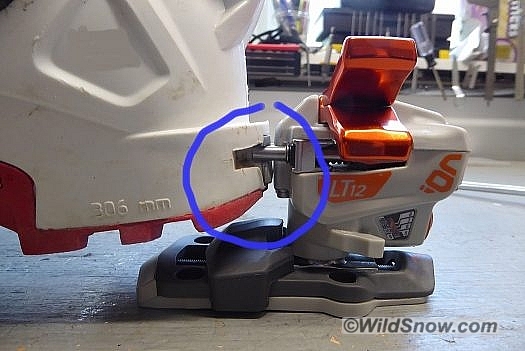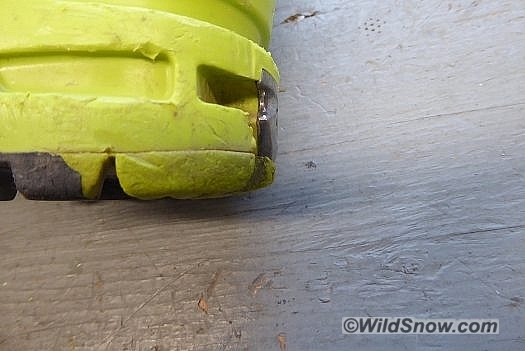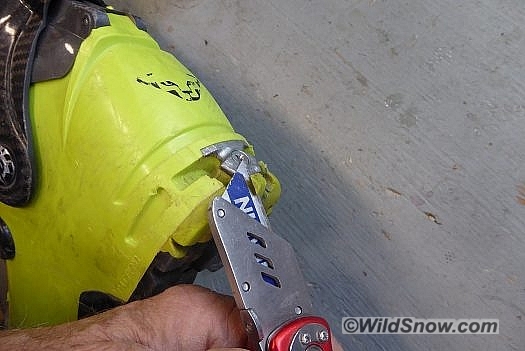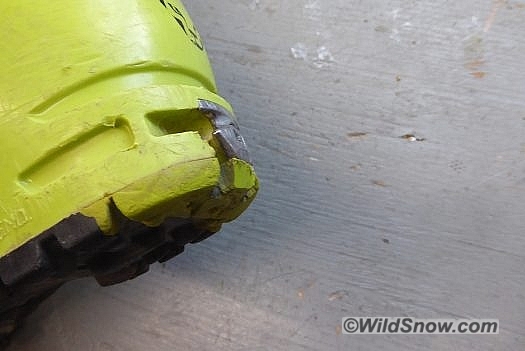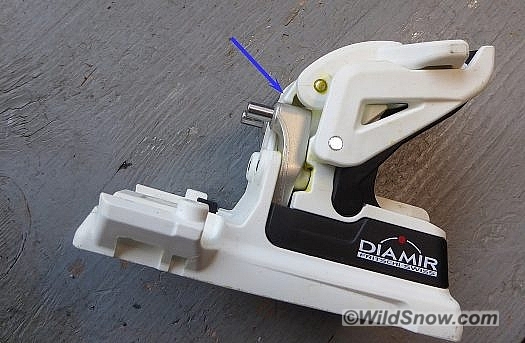Any of you use ski touring tech bindings with zero tech gap at the heel, what we call the “kiss gap,” and had trouble clipping your heels down when you’re in deep soft powder? Here is the deal:
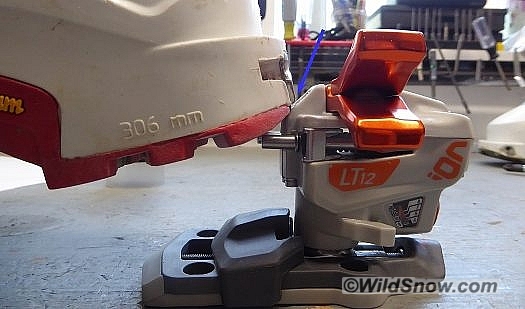
With kiss gap set, if you somehow flex your ski when stomping your heel down as you enter binding, the shortened distance created by the flexed ski causes your boot heel to land something like this. Both the boot heel and the ski touring binding need inclined “ramps” to help with this situation, to lead the boot down into the binding utilizing the “ski flex compensation” built into all bindings with zero gap. Shown above, the ION binding has an angled lead-in ramp to mitigate or eliminate problems with step-in.
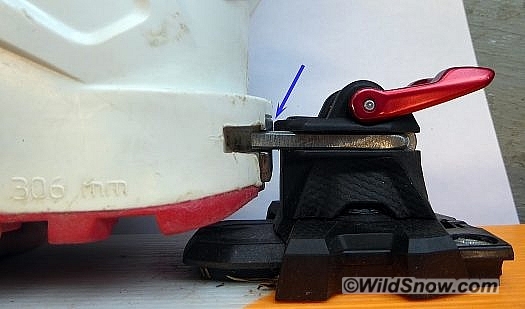
New Marker Alpinist set with kiss gap. Note the binding lacks a lead-in ramp, so it’ll depend entirely on the heel of the boot having a ramp shape. I find it odd the Alpinist has the small tab of plastic that’s set close to the boot with the kiss gap, while there being so much space between the lower binding and the boot heel. Perhaps an effort to reduce friction during lateral release?
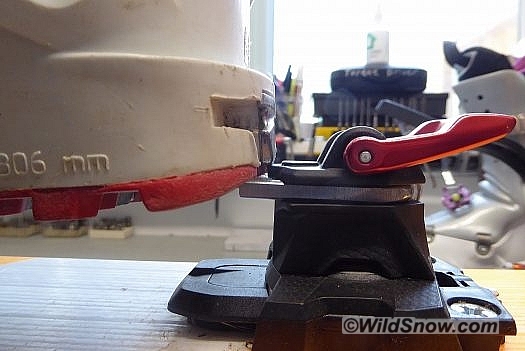
As the Alpinist binding does not have a ramp, this is what your boot heel can do if you attempt to clip in with a flexed ski. If your ski is not heavily flexed and your boots have plenty of ramp you might not notice the effect, but we’d prefer to see the binding help with this as well.
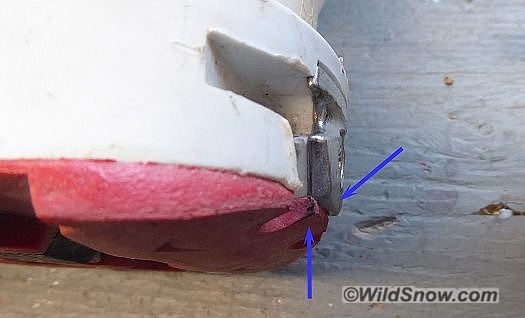
Detail of Scott boot heel. The rubber has a nice ramped shape, but I’d prefer a smoother transition to the steel tech fitting.
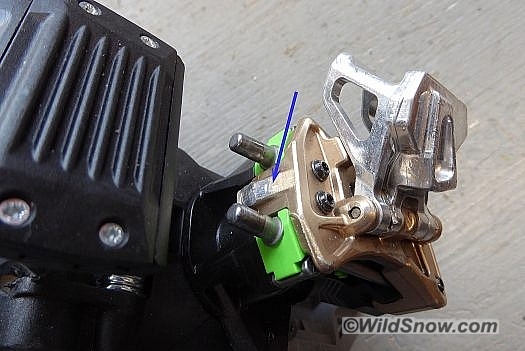
Dynafit Radical 2 is set with kiss gap, has a nice ramp. Radical “1” models are confusing in this regard. Many of the later ones have ski flex compensation, are set to kiss gap, but don’t have a lead-in ramp and thus can present this problem of the boot heel being blocked when clicking in on a flexed ski. Earlier Radical bindings were set at a 5 mm gap, thus not needing any sort of lead-in ramp.
If you’re an average to smaller skier and don’t end up clicking in while standing on soft snow, you might have no reason to consider all the above. On the other hand: if you ever find yourself stomping your heels down over and over again without that satisfying tech binding click, wondering what the heck is going on, now perhaps you know.
My opinion about all this? I’m still a fan of the astounding simplicity in the basic tech binding that uses heel gap for ski flex compensation. I’m not quite sure why so many companies go to so much trouble ignoring that and creating various spring loaded machinery that appears silly in comparison. If you’re going for TUV certification to ISO-DIN ski touring binding standard, you do need ski flex compensation, but very few tech binding makers go to the trouble of TUV. One consideration is that the binding release/retention setting does slightly change when a classic tech gap widens or narrows as the ski flexes, but I’ve never seen that as a big concern. Mysteries of the universe, I suppose.
WildSnow.com publisher emeritus and founder Lou (Louis Dawson) has a 50+ years career in climbing, backcountry skiing and ski mountaineering. He was the first person in history to ski down all 54 Colorado 14,000-foot peaks, has authored numerous books about about backcountry skiing, and has skied from the summit of Denali in Alaska, North America’s highest mountain.

